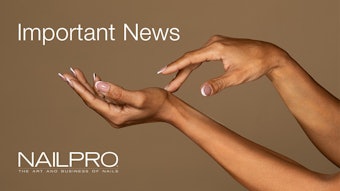 Consumer with an edge. Classic with a modern twist. Such descriptions merely scratch at the surface of the latest Aquage/Biomega collection, Geometrix. By taking the four most effective, most simple to understand graduation techniques and marrying them with your own personal vision, Luis Alvarez says that you can create any look with precision and beauty. We sat down with the founder and owner of Aquage to share with you his foundation for success and his advice for inspiration.
Consumer with an edge. Classic with a modern twist. Such descriptions merely scratch at the surface of the latest Aquage/Biomega collection, Geometrix. By taking the four most effective, most simple to understand graduation techniques and marrying them with your own personal vision, Luis Alvarez says that you can create any look with precision and beauty. We sat down with the founder and owner of Aquage to share with you his foundation for success and his advice for inspiration.
CLICK HERE TO ENTER TO WIN A GEOMETRIX DVD!
 Why did you feel that it was necessary to base a collection around four graduation techniques?
Why did you feel that it was necessary to base a collection around four graduation techniques?
The Aquage Advanced Academy has been open for two years, and during that time we’ve learned a lot. In the beginning, we tried to teach as many advanced techniques as possible, thinking that those who attended wanted something way beyond the basics. But we surveyed our students at the end, and one question kept cropping up: Can you go over graduation more? This is one technique that everyone assumes everyone knows, but people still aren’t sure when to apply different types. Since the program was so successful, we decided to put it into DVD form so everyone could have a chance to learn from it.

You speak a lot on the difference between vision and technique. Can you elaborate?
I’m 53 now, and I started when I was 18; it’s taken me this long to figure it out! To put it in the most simplistic terms: Vision is personal; technique is universal. There are so many influences that contribute to your vision: where you were born, what kind of books you like, what your favorite color is, and so on. Vision is your inner voice; don’t try to become something you’re not. If you love elegance, be the most elegant artist you can be. But even the most elegant or rock n’ roll artist needs to know the same foundational techniques, which is how you achieve your personal vision.

How important are tools to learning technique and executing your vision?
Tools don’t make you more creative, but they’re directly responsible for your quality of your work. Take a pair of scissors, for example. You learn how to do the technique and you have your vision. But if you perform with a really great shear, your final haircut is going to be that much sharper.

What do you feel is the best way for stylists to hone their technique and express their vision?
I encourage hairdressers to get involved in image making. Within all of us is this artist who just wants to express him or herself. There’s nothing that can provide artists with as much satisfaction as being able to communicate to the world who they are. It may only comprise 10% of what we do as stylists, but it’s really important. Disillusion can set in after a while. In fact, I took photography specifically because of this. Even if it costs you money, it’s worth it to be able to craft your own vision. If you do that, you’ll understand your role in the salon better.

What’s your advice to stylists who are stuck in a styling rut?
First: education, education, education. Once you become successful, you tend to start relying on your own abilities. You need to put your butt back in a desk and learn something. Everyone should take a class, matter how successful they are. Second: collaborate in the image-making process. See what it does for you emotionally. It’s not a one-day event. For this shoot, Eric Fisher and I literally spent a month prepping before we clicked the shutter. It may have been shot in 1/25 of a second, but weeks of work went into the shot beforehand. That exercise is irreplaceable for any artist. Training is the opposite of hoping.
@CREDITS: Photography: Luis Alvarez of Aquage; hair: Eric Fisher of Aquage; haircolor: Deena Nicely of Aquage; hair tech: Carly Campbell of Aquage; makeup: Wanda Alvarez; fashion stylist: Patrick Chauvez; production: Don Wismer: Products used: all styles created with Biomega Behave, Text me, and Shake; available at www.aquage.com







